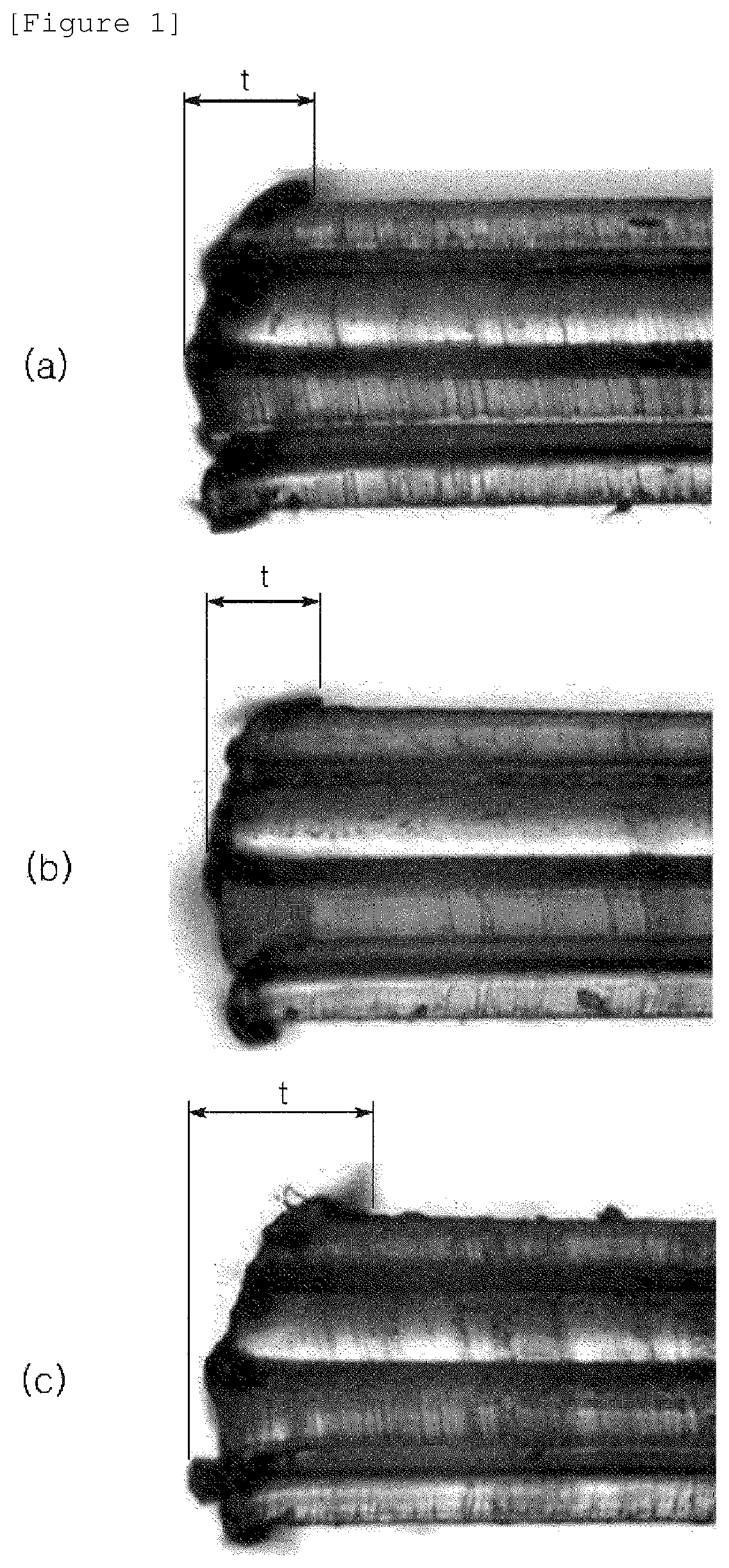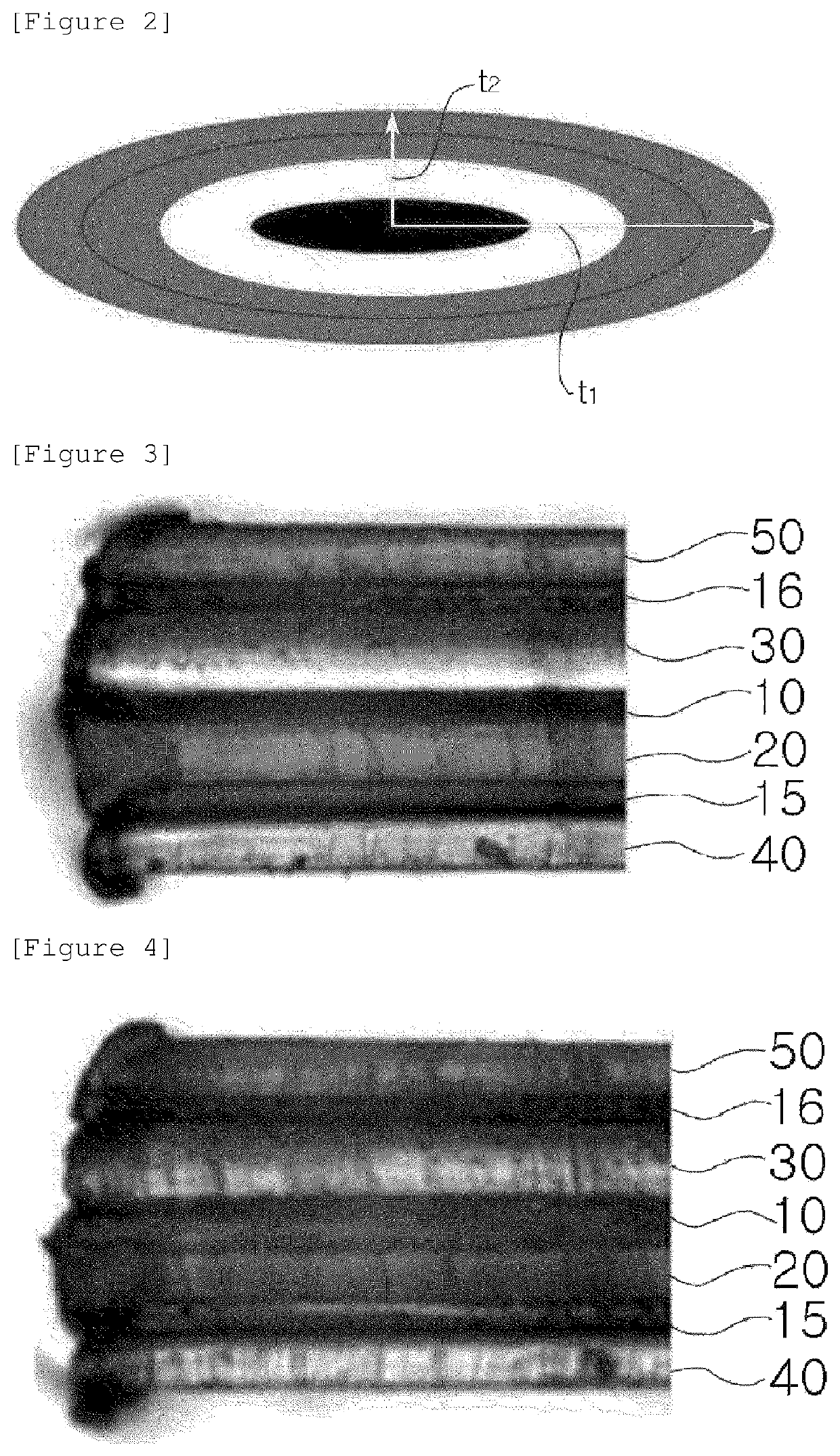Method for cutting polarizing plate and polarizing plate cut using same
a technology of polarizing plate and laser cutting, which is applied in the direction of polarizing elements, instruments, manufacturing tools, etc., can solve the problems of easy peeling of the interface between an optical film and a polarizer, insufficient wet heat resistance, and easy degradation of the polarization degree and color, etc., to achieve excellent cross-sectional quality, excellent appearance quality and optical characteristics, and the effect of reducing the generation of fum
- Summary
- Abstract
- Description
- Claims
- Application Information
AI Technical Summary
Benefits of technology
Problems solved by technology
Method used
Image
Examples
example 1
[0053]A polarizing plate in which a PET film / a TAC film / a PVA polarizing element / a COP film / a tackifier layer / a PET film were stacked in this order was cut in a direction that is the same as the stretching direction of the polarizing plate by using a laser having a beam shape of an ellipse with a ratio of major axis to minor axis of 1:0.5. In this case, the COP film used had a thickness of 60 μm, and the polarizing plate had a thickness of 250 μm. Furthermore, the laser light required to cut the polarizing plate had a minimum pulse energy of 5.4 mJ, and the cutting speed of 333 mm / s.
example 2
[0054]A polarizing plate was cut in the same manner as in Example 1, except that the polarizing plate was cut in a direction vertical to the stretching direction of the polarizing plate. In this case, the laser light required to cut the polarizing plate had a minimum pulse energy of 6.4 mJ, and the cutting speed of 700 mm / s.
example 3
[0055]A polarizing plate was cut in the same manner as in Example 1, except that a COP film having a thickness of 40 μm was used and the polarizing plate had a thickness of 230 μm. In this case, the laser light required to cut the polarizing plate had a minimum pulse energy of 5 mJ, and the cutting speed of 333 mm / s.
PUM
| Property | Measurement | Unit |
|---|---|---|
| size | aaaaa | aaaaa |
| pulse energy | aaaaa | aaaaa |
| cutting speed | aaaaa | aaaaa |
Abstract
Description
Claims
Application Information
 Login to View More
Login to View More - R&D
- Intellectual Property
- Life Sciences
- Materials
- Tech Scout
- Unparalleled Data Quality
- Higher Quality Content
- 60% Fewer Hallucinations
Browse by: Latest US Patents, China's latest patents, Technical Efficacy Thesaurus, Application Domain, Technology Topic, Popular Technical Reports.
© 2025 PatSnap. All rights reserved.Legal|Privacy policy|Modern Slavery Act Transparency Statement|Sitemap|About US| Contact US: help@patsnap.com



